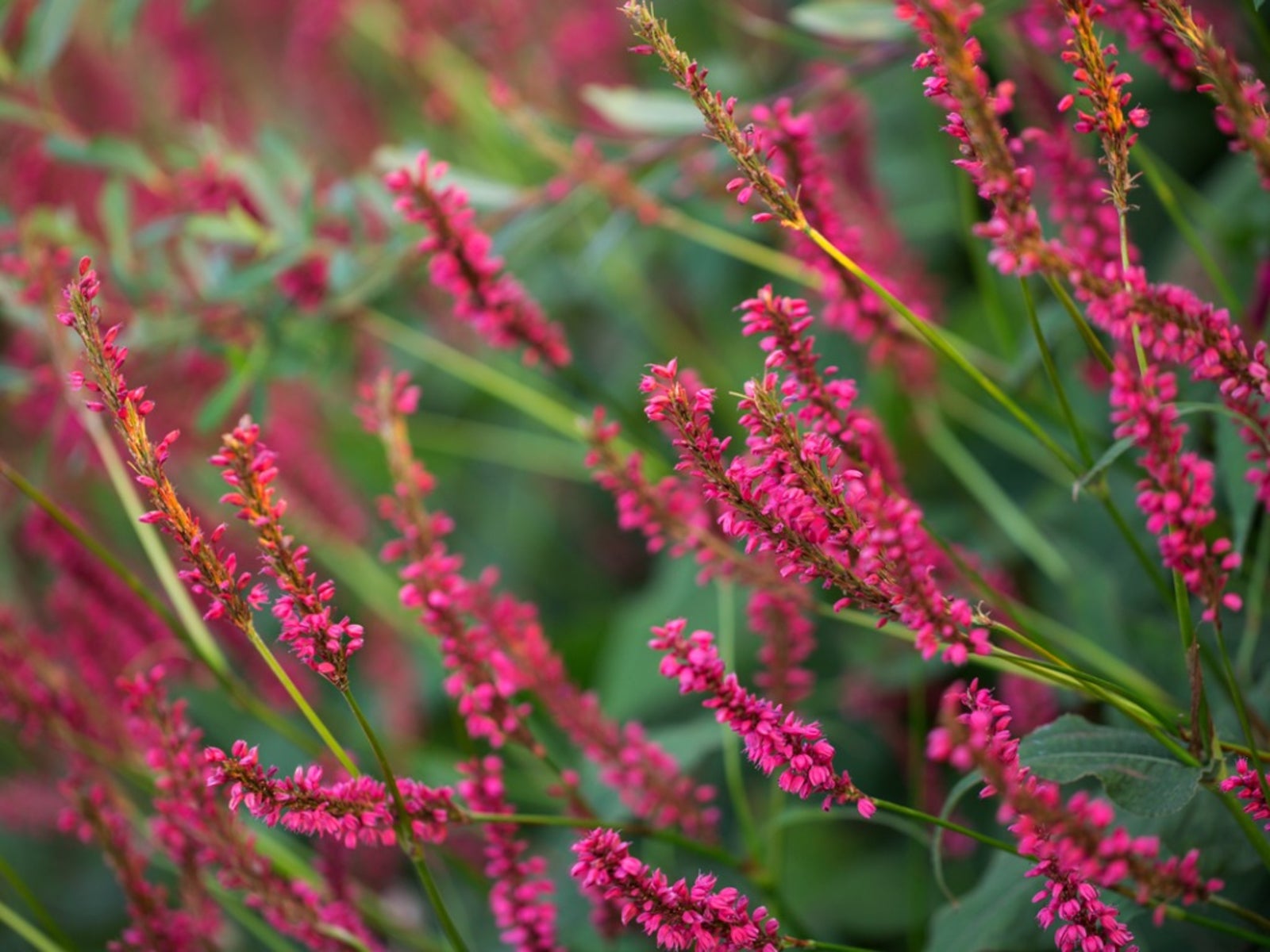Mountain Fleece Information: How To Grow Mountain Fleece Plants


What is mountain fleece? Also known as persicaria, bistort, or knotweed, mountain fleece (Persicaria amplexicaulis) is a hardy, upright perennial that produces narrow, bottle brush-like flowers of purple, pink, red, or white that last throughout summer and into early fall. Keep reading and we’ll tell you how to grow mountain fleece in your own garden.
Mountain Fleece Information
Mountain fleece is native to the Himalayas, so it’s no surprise that this tough plant tolerates winters as far north as USDA plant hardiness zone 4. Keep in mind, however, that persicaria doesn’t do well above zone 8 or 9. At maturity, mountain fleece reaches heights of 3 to 4 feet (1 m.), with a similar spread. This plant is a real charmer in flower beds or borders, or alongside a stream or pond. If you have a rock garden, prairie-style landscape, or garden meadow, persicaria/mountain fleece will provide low-maintenance, long lasting beauty. You might like to know that while butterflies, birds, and bees love the showy flowers, mountain fleece usually isn’t bothered by deer.
How to Grow Mountain Fleece
You may find mountain fleece plants at your neighborhood garden center. If not, look at nurseries that specialize in wildflowers. Once your growing persicaria mountain fleece is established, it’s easy to divide in spring or fall. Mountain fleece performs best in moist, well-drained soil. While this plant loves sunlight, it will also tolerate some light shade, which is actually beneficial in hot climates. Although the plant generally is well-behaved, it grows via underground stolons and can be rambunctious. Give mountain fleece a little room to spread.
Persicaria Care
Persicaria care is relatively simple, but here are a few tips that may help: When it comes to growing persicaria mountain fleece, the most important thing is moisture, especially for plants located in full sunlight. Water as needed and don’t allow the soil to become bone dry. A few inches (8 cm.) of mulch or compost helps keep the soil cool and moist. Similarly, several inches (8 cm.) of mulch, pine needles, or dry, chopped leaves are a good idea if winters are harsh. Watch for aphids, which are easy to control with insecticidal soap spray. Don’t spray when the sun is directly on the leaves, or if you notice bees are present. Japanese beetles can turn foliage into Swiss cheese very quickly. This is an excellent reason to encourage birds to visit your garden. Otherwise, the most effective means of control is hand-picking. Insecticidal soap spray combined with vegetable oil may help. To control slugs and snails, limit mulch to 3 inches (8 cm.) or less and keep your garden free of debris and other hiding places. Non-toxic slug baits are available for more serious infestations.
Sign up for the Gardening Know How newsletter today and receive a free copy of our e-book "How to Grow Delicious Tomatoes".

A Credentialed Garden Writer, Mary H. Dyer was with Gardening Know How in the very beginning, publishing articles as early as 2007.